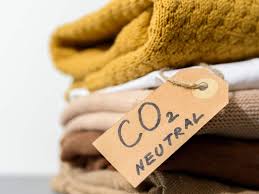How to Identify and Source Sustainable Fabric Materials for Clothing?

With the increasing concern about the environmental impact of the fashion industry, it is important for consumers and brands to find sustainable alternatives to traditional fabric materials. Sustainable fabrics are produced in a way that minimizes harm to the environment and promotes ethical practices throughout the supply chain. This article aims to provide a comprehensive guide on how to identify and source sustainable fabric materials for clothing.
When looking for sustainable fabric materials, there are a few key factors to consider.
Firstly, the production process of the fabric should be eco-friendly. This means that it should use fewer resources such as water, energy, and chemicals, and minimize waste and pollution. Look here for sustainable fabric materials for clothing that are certified organic, as they are grown without the use of harmful pesticides and require less water.
Secondly, consider the durability and longevity of the fabric. Sustainable fabrics should be long-lasting, reducing the need for frequent replacements and ultimately decreasing waste. Fabrics like hemp and linen are known for their durability and ability to withstand multiple washes.
Another important factor to consider is the social and ethical impact of the fabric. Sustainable fabrics should be produced in fair and safe working conditions, with fair wages and labor practices. Look for certifications such as Fair Trade or GOTS (Global Organic Textile Standard) to ensure that ethical standards are being met.
In terms of sourcing sustainable fabric materials, there are a few options available. One option is to look for brands that specifically focus on sustainability and transparency in their supply chains. These brands often provide detailed information about the source and production process of their fabrics.
Another option is to explore second-hand or vintage clothing. By buying pre-owned clothing, you are reducing the demand for new fabric materials and extending the lifespan of existing garments.
Lastly, consider local and small-scale artisans and designers who prioritize sustainability. These individuals often have direct control over their supply chains and can provide information about the materials they use.
In conclusion, finding sustainable fabric materials for clothing requires careful consideration of the production process, durability, and social impact of the fabric. By researching brands and certifications, exploring second-hand options, and supporting local artisans, consumers and brands can make a positive impact on the environment and promote ethical practices in the fashion industry.
Understanding Sustainable Fabrics
Sustainable fabrics can be defined as materials that have been produced in an environmentally and socially responsible manner. These fabrics are made using processes that minimize the use of natural resources, reduce pollution, and prioritize fair labor practices.
Sustainable fabrics are a crucial part of the movement towards more sustainable fashion and textiles. They are designed to have a minimal impact on the environment and the communities involved in their production.
One of the key aspects of sustainable fabrics is the reduction of natural resource usage. This can include using organic or recycled materials instead of traditional ones. For example, organic cotton is grown without the use of synthetic fertilizers and pesticides, reducing the damage to soil and water systems. Similarly, recycled polyester is made from post-consumer plastic bottles, reducing the demand for new petroleum-based materials.
In addition to minimizing resource usage, sustainable fabrics also aim to reduce pollution. This can involve using processes that minimize water and energy consumption, as well as avoiding the use of harmful chemicals. For example, some sustainable fabrics are dyed using natural or low-impact dyes that are less harmful to the environment and the workers involved in the dyeing process.
Furthermore, sustainable fabrics prioritize fair labor practices. This means ensuring that workers involved in the production of the fabrics are paid fair wages and have safe working conditions. This includes providing access to healthcare and education, and promoting gender equality and worker empowerment.
Overall, sustainable fabrics play a crucial role in the transition towards a more environmentally and socially responsible fashion industry. By choosing sustainable fabrics, consumers can make a positive impact by supporting brands that prioritize sustainability and ethical practices.
Sourcing Sustainable Fabrics
Now that we have a better understanding of what makes a fabric sustainable, let’s explore some ways to source these materials:
Now that we have a better understanding of what makes a fabric sustainable, let’s explore some ways to source these materials:
1. Organic cotton: A great way to source sustainable fabrics is through organic cotton. This type of cotton is grown without the use of harmful pesticides and chemicals, making it better for the environment and the people involved in its production.
2. Hemp: Hemp is a versatile and sustainable fabric that requires minimal water and no pesticides to grow. It is also a fast-growing plant, making it a great alternative to traditional cotton or synthetic fabrics.
3. Recycled materials: Another option for sourcing sustainable fabrics is to use recycled materials. This can include materials like recycled polyester, which is made from recycled plastic bottles, or recycled denim, which is made from old jeans. By using recycled materials, we can reduce waste and give new life to old products.
4. Tencel: Tencel is a fabric made from eucalyptus trees, which are grown in sustainable forests. The production of Tencel requires less water and energy compared to traditional fabrics, making it a more environmentally friendly choice.
5. Bamboo: Bamboo is a fast-growing and renewable resource that can be turned into a fabric. It requires minimal water and no pesticides to grow, making it a sustainable option for sourcing fabrics. However, it’s important to ensure that the manufacturing process for bamboo fabric is also environmentally friendly.
6. Second-hand or vintage fabrics: One of the most sustainable ways to source fabrics is by using second-hand or vintage materials. This can involve repurposing old garments or textiles, or purchasing fabrics from thrift stores or vintage shops. By giving these materials a new life, we can reduce the demand for new fabric production.
These are just a few ways to source sustainable fabrics. By being mindful of the materials we use and considering their environmental impact, we can make more sustainable choices in the fashion industry.
Conclusion
Sourcing sustainable fabric materials for clothing is crucial in reducing the fashion industry’s impact on the environment and promoting ethical practices. By understanding the key factors that make a fabric sustainable and exploring various sourcing options, consumers and brands can make informed decisions that align with their values. With the growing interest in sustainability, the availability and accessibility of sustainable fabrics are increasing, making it easier for the fashion industry to transition towards a more sustainable future.





